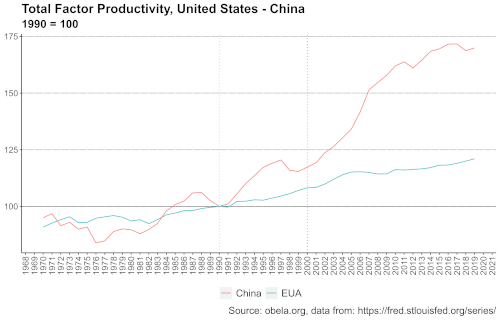The economic forces that helped to give rise and direction to the Trump phenomena have social and political consequences. These will not just disappear and cannot be quantified as an exact science. So these kind of people will also affect the post-Trump USA. Photo by Blink O’fanaye.
The United States after Trump
by Armando Negrete — Latin American Economic Observatory
As the world economy moves towards new normality, a period of profound international transformations is approaching. The economic and health crisis provoked by COVID19 has shown the limits of UN multilateralism and international cooperation, the effects of the trade and technology wars against China, the interests behind technological control of the energy transition, and the loss of US leadership. The election of Joseph Biden prevented the continuation of Trump’s program and restored an international Democratic plan to the executive. Given these changes, what can international relations and our Latin American countries expect after the first 100 days of his mandate?
At the beginning of March, Biden published his Interim National Security Strategic Guidance (INSSG), intending to set out the foreign policy and security foundations to define the new National Security Strategy that will replace that of 2017. The document recognizes how China became more assertive and became ‘the only competitor capable of combining its economic, diplomatic, military and technological power to pose a challenge to the international system.’ It identifies, as the most urgent task, rebuilding its economic foundations, regaining its place in international institutions, modernizing its military and diplomatic capabilities, and revitalizing its network of global alliances and partnerships. However, the damage caused by the Trump administration in these areas was profound, and the path of reconstruction will face several problems in all areas.
Concerning its place in international institutions, the United States spoke out against the World Trade Organization (WTO), the World Health Organization (WHO), UNESCO and pulled out of the Iraq Nuclear Agreement, the Open Skies Treaty, the Paris Climate Agreement, and the United Nations Human Rights Council (UNHRC). Under Biden, the United States rejoined the WHO and the COVAX program with an additional $2 billion contribution, and the Paris Agreement, with strengthened emission reduction commitments. In principle, the United States rejoins the fight against two of today’s most essential crises, health, and climate, but does not address its economic problem and loss of leadership.
In his first 100 days speech, Biden announced his three-part Build Back Better (BBB) agenda: rescue, recovery, and rebuild. The agenda incorporates: 1. A Rescue Plan, consisting of $1.9 trillion in income support to households, safe return to schools and reinforcement of the vaccination program; 2. A Jobs Plan, dedicated to job creation through an investment of more than $2.3 billion in construction, infrastructure and clean energy; and 3. A Family Plan, consisting of $1.8 trillion spending for “middle-class prosperity” in education, health care, and childcare, as well as changes to the tax law and reversal of 2017 tax breaks. Overall, the BBB comprises more than $6 trillion in federal spending, the largest in its history.
The Biden administration’s most sensitive focus, expressed in both the INSSG and the BBB agenda, is the economic recovery that achieves growth, competitiveness, and technological development. Between 2010 and 2019, the United States has sustained average GDP growth of 2.2 percent, far below China’s 7.6 percent and even 2.8 percent worldwide. The loss of international competitiveness ended with a trade war against the most dynamic economy, which leads not only in terms of growth rate but also in technological innovation, energy transition, and, increasingly, diplomacy. The gap between these two economies is widening.
According to Biden, “there is no reason why wind turbine blades can’t be built in Pittsburgh instead of Beijing” or “…why American workers can’t lead the world in the production of electric vehicles and batteries.” He ignores the minimal productivity gains that have been dragging on for more than three decades and the high wages of US workers and even seeks to increase them. Since 1990, when China began to open its market and, more strongly, since 2000, when it joined the World Trade Organization, the relocation of production and the building of global value chains have moved towards much more productive economies.
Biden’s national security strategy position recognizes that ‘the United States cannot afford to remain absent on the world stage, as it had been under Trump. However, it does not consider whether it is too late or even possible to return to the same place. The legitimacy of US democracy has finally collapsed, after all the interventions and coups in Latin America, the Middle East, and Africa, with the latest spectacle of its last elections and the unchecked racial violence in policing. Despite its massive budget, the BBB plan will face its structural limits and the accelerating global transformations led by China. The risk will then be that economic and political avenues exhausted, the United States will seek to regain its leadership by military means. The long-term economic effect of low US growth will be that it will continue to drag down Latin American economies, especially in the Caribbean Basin.
Contact us by email at fund4thepanamanews@gmail.com
To fend off hackers, organized trolls and other online vandalism, our website comments feature is switched off. Instead, come to our Facebook page to join in the discussion.
These links are interactive — click on the boxes













